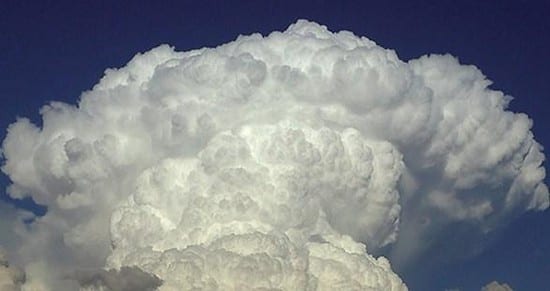The formation of most of the clouds results from upward movements of humid air that expands due to the decrease in pressure with the altitude and therefore adiabatic cooling. Then a part of the water vapor condenses to form the cloud.
Previously we explained the characteristics of the various kinds of clouds and also how their shapes are a consequence of the processes of lifting the air that are what shape them. The various types of vertical movements that can give rise to the formation of clouds are listed below:
- Mechanical turbulence (or friction turbulence)
- Convection (or thermal turbulence)
- Orographic ascent
- Long and slow ascent
La mechanical turbulence or by friction it originates when the air flow in the proximity of the earth's surface is dislocated by frictional force in a series of eddies. This turbulence is favored by the presence of obstacles (trees, buildings, hills, etc.).
Currents of convection They develop when the air is heated in the vicinity of the surface. The convection or thermal turbulence combines with mechanical or frictional turbulence to cause mixing of the lower layers of the atmosphere.
At orographic ascent What happens is that when the air reaches a chain of mountains or hills it is forced to rise both in the lower layers and in altitude. The upward movement affects a deep layer of the atmosphere and the vertical distribution of temperature in it is modified. The air forced to rise is cooled by adiabatic expansion and clouds can form.
El ascent of great horizontal extensionIt is often triggered initially by a divergence in the upper troposphere. The divergent flow at high altitudes causes a decrease in pressure in the lower layers near the earth's surface, forming a depression. Convergence then takes place near sea level and a slow and wide horizontal rise occurs over a great thickness of the troposphere and then, provided there is sufficient humidity, extensive cloud development occurs.
Source - Compendium of notes for the training of class IV meteorological personnel », by BJ retallack
More information - cumulonimbus, Height, altitude, vertical dimension and cloud levels, Condensation, freezing and sublimation
